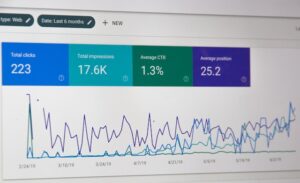Imagine you're a busy professional juggling countless tasks and deadlines. Your time is precious, and it's essential to manage it effectively.
In this article, we'll explore 15 proven strategies to help you conquer the chaos and take control of your schedule.
From prioritizing tasks and setting clear goals to avoiding multitasking and fostering a healthy work-life balance, these techniques will empower you to navigate the demands of your professional life with ease.
Get ready to unlock the secrets of effective time management!
Key Takeaways
- Prioritize tasks and set clear goals to increase focus and motivation.
- Avoid multitasking and delegate responsibilities to improve productivity and reduce stress.
- Utilize time blocking techniques and eliminate distractions to increase efficiency and achieve work-life balance.
- Utilize technology and automation tools, take regular breaks, and practice effective communication and collaboration strategies to streamline tasks and improve overall performance.
Prioritize Tasks Effectively
When managing your time effectively as a busy professional, prioritizing tasks is crucial. Setting deadlines and using time management techniques can help you prioritize your tasks efficiently.
Start by identifying the most important and urgent tasks that need to be completed first. This will allow you to focus on what truly matters and avoid wasting time on less important activities.
Make sure to set realistic deadlines for each task, taking into consideration any dependencies or constraints that may affect their completion. By setting deadlines, you create a sense of urgency and hold yourself accountable for completing the tasks on time.
Additionally, utilize time management techniques such as the Pomodoro Technique or Eisenhower Matrix to further enhance your prioritization skills and optimize your productivity.
Set Clear Goals and Objectives
To effectively manage your time as a busy professional, start by setting clear goals and objectives. Clear goal setting allows you to have a clear direction and purpose in your work, helping you stay focused and motivated. It also helps you prioritize your tasks and allocate your time and resources effectively. On the other hand, effective objective setting ensures that your goals are specific, measurable, achievable, relevant, and time-bound (SMART). This helps you break down your goals into smaller, actionable steps, making them more attainable and manageable. By setting clear goals and objectives, you can better plan your time, increase your productivity, and achieve success in your professional endeavors.
| Benefits of Clear Goal Setting | Benefits of Effective Objective Setting |
|---|---|
| Provides direction and purpose in work | Breaks down goals into actionable steps |
| Helps prioritize tasks and allocate time effectively | Ensures goals are specific and measurable |
| Increases focus and motivation | Makes goals more attainable |
| Improves planning and time management | Enhances productivity |
| Leads to success in professional endeavors | Increases overall effectiveness |
Avoid Multitasking
To effectively manage your time as a busy professional, it's essential to avoid multitasking. Multitasking may seem like a way to get more done, but it actually hinders productivity and increases the likelihood of errors. Here are three reasons why you should avoid multitasking:
- Multitasking leads to decreased focus and concentration, making it difficult to complete tasks efficiently.
- Multitasking increases stress levels as you try to juggle multiple tasks at once, leading to burnout and decreased job satisfaction.
- Multitasking can also result in more mistakes and errors, which can negatively impact your work quality and reputation.
To avoid distractions and improve time management techniques, it's crucial to focus on one task at a time. Prioritize your tasks, eliminate distractions, and allocate specific time slots for each task.
Delegate Responsibilities When Possible
Delegate responsibilities to maximize your productivity and time management as a busy professional.
One of the most effective time management techniques is to delegate tasks to others whenever possible. Delegating not only helps you free up your time, but it also allows you to focus on more important and high-priority tasks.
Identify tasks that can be easily handed over to someone else, such as administrative work, scheduling appointments, or data entry. By delegating these tasks, you can allocate your time and energy to more strategic and value-added activities that require your expertise and attention.
Additionally, delegating tasks can also help develop the skills and capabilities of your team members, fostering a sense of empowerment and growth.
Use Time Blocking Techniques
To effectively manage your time, it's crucial to prioritize tasks effectively.
By using time blocking techniques, you can allocate specific time slots for each task, ensuring that you focus on one thing at a time and avoid multitasking.
Setting clear boundaries and sticking to your schedule will optimize your productivity levels and help you accomplish more in less time.
Prioritize Tasks Effectively
You can effectively prioritize tasks by regularly using time blocking techniques. By incorporating these strategies into your daily routine, you can ensure that you focus on the most important tasks and achieve your goals efficiently.
Here are three sub-lists to help evoke emotion and make the process more engaging:
- Increased productivity: By allocating specific time slots for each task, you can eliminate distractions and stay focused, resulting in increased productivity and a sense of accomplishment.
- Reduced stress: Time blocking helps you stay organized and prevents tasks from piling up, reducing the feeling of being overwhelmed and stressed.
- Greater clarity and control: Setting SMART goals and creating a task matrix allows you to gain clarity on what needs to be done and gives you a sense of control over your schedule and priorities.
Set Clear Boundaries
To effectively set clear boundaries and improve your time management skills, utilize time blocking techniques. By using this method, you can allocate specific blocks of time for different activities, allowing you to focus and avoid distractions. Setting clear boundaries is crucial not only in managing your time effectively but also in maintaining healthy relationships and achieving a good work-life balance. It helps you establish expectations with others and ensures that you have dedicated time for both work and personal activities. Here is an example of how time blocking can be used to set clear boundaries:
| Time | Monday | Tuesday | Wednesday |
|---|---|---|---|
| 9:00 AM | Work | Work | Work |
| 12:00 PM | Lunch | Lunch | Lunch |
| 2:00 PM | Meeting | Meeting | Meeting |
| 6:00 PM | Personal Time | Personal Time | Personal Time |
Optimize Productivity Levels
How can you effectively optimize your productivity levels as a busy professional? One of the most effective ways to do so is by using time blocking techniques. By organizing your day into specific blocks of time dedicated to different tasks, you can optimize your focus and ensure that you're making the most of your time.
Here are three emotional benefits of using time blocking techniques:
- Increased sense of accomplishment: When you see your scheduled tasks being completed one by one, you'll feel a sense of achievement and motivation.
- Reduced stress and overwhelm: By breaking your day into manageable chunks, you'll feel more in control and less overwhelmed by your workload.
- Improved work-life balance: Time blocking allows you to allocate dedicated time for both work and personal activities, helping you strike a better balance between your professional and personal life.
Minimize Distractions and Interruptions
By prioritizing and eliminating unnecessary distractions and interruptions, you can significantly enhance your ability to manage time effectively as a busy professional.
To minimize distractions, start by identifying the common sources of interruptions in your work environment. This could include noisy colleagues, constant email notifications, or social media distractions. Once identified, take proactive steps to eliminate or reduce these distractions.
For example, you can use noise-canceling headphones to block out noise, turn off email notifications and set specific times to check your email, or use website blockers to limit your access to social media during work hours.
Additionally, improving your focus requires creating a conducive work environment. Keep your workspace organized and clutter-free, establish clear boundaries with colleagues regarding interruptions, and practice deep work techniques, such as the Pomodoro technique, to maximize your productivity.
Implement a Daily Schedule
To effectively implement a daily schedule, you need to utilize time blocking techniques and prioritize tasks.
Time blocking involves setting aside specific blocks of time for different activities, allowing you to focus and complete tasks efficiently.
Prioritizing tasks helps you identify and tackle the most important ones first, ensuring that you make progress on your most critical responsibilities.
Time Blocking Techniques
Start your day with a clear and organized plan by implementing time blocking techniques in your daily schedule. Time blocking benefits are numerous and can greatly improve your productivity and efficiency.
Here are some tips to help you effectively implement time blocking:
- Prioritize tasks: Identify the most important and urgent tasks that need to be accomplished.
- Allocate specific time slots: Assign dedicated time blocks for each task, ensuring that you have enough time to complete them.
- Minimize distractions: Eliminate any potential distractions during your time blocks to maintain focus and concentration.
By implementing time blocking techniques, you can better manage your time, stay organized, and increase your overall productivity.
Prioritizing Tasks Effectively
Continue your journey towards effective time management by implementing a daily schedule that prioritizes tasks efficiently. Setting SMART goals and using time management techniques are crucial in ensuring productivity and success. To help you visualize the importance of prioritizing tasks, consider the following table:
| Task | Importance Level |
|---|---|
| Key Project | High |
| Important Meeting | Medium |
| Routine Emails | Low |
| Personal Tasks | Low |
| Administrative | Low |
Learn to Say No
Mastering the art of assertiveness is crucial for busy professionals looking to optimize their time management skills. Learning to say no is a fundamental aspect of establishing boundaries and effectively communicating your priorities. By developing the ability to decline requests that don't align with your goals, you can focus on tasks that truly matter.
Here are three emotional reasons why learning to say no is important:
- Reduced stress: Saying no allows you to avoid overcommitment, which can lead to burnout and increased stress levels.
- Improved productivity: By saying no to nonessential tasks, you can allocate your time and energy to the most important projects, enhancing your overall productivity.
- Enhanced work-life balance: Saying no helps you create a healthy balance between work and personal life, enabling you to prioritize self-care and spend quality time with loved ones.
Utilize Technology and Automation Tools
To optimize your time management skills as a busy professional, utilize technology and automation tools to streamline your tasks and increase efficiency. In today's fast-paced world, technology advancements have provided numerous time-saving strategies that can help you accomplish more in less time. By leveraging these tools, you can automate repetitive tasks, delegate responsibilities, and stay organized, allowing you to focus on more important priorities. Here is a table outlining some popular technology tools and their benefits:
| Technology Tool | Benefits |
|---|---|
| Project management software | Helps with task tracking and collaboration |
| Calendar and scheduling apps | Keeps your schedule organized and sends reminders |
| Email filters and autoresponders | Manages your inbox and saves time replying to emails |
| Virtual assistants and chatbots | Assists with basic tasks and handles customer inquiries |
Take Regular Breaks for Rejuvenation
You may think that taking regular breaks is counterproductive, but in reality, it's an essential strategy for effective time management.
Research shows that taking short breaks throughout the day can actually improve productivity, focus, and overall well-being.
The key is to find the optimal break duration for you and incorporate these rejuvenating breaks into your schedule.
Benefits of Rejuvenating Breaks
Take regular rejuvenating breaks to maximize your productivity and overall well-being. Incorporating breaks into your schedule is crucial for maintaining optimal performance throughout the day.
Here are some benefits of taking regular rejuvenating breaks:
- Increased focus and concentration: Breaks allow your brain to recharge, improving your ability to stay focused and concentrate on tasks.
- Reduced stress and burnout: Taking breaks helps to alleviate stress and prevent burnout, allowing you to maintain a healthier work-life balance.
- Enhanced creativity and problem-solving skills: Stepping away from your work for a short break can stimulate your creativity and provide fresh perspectives, leading to better problem-solving abilities.
Remember to consider the optimal break duration and schedule breaks strategically to ensure maximum effectiveness.
Optimal Break Duration
Incorporating regular rejuvenating breaks into your schedule optimizes your productivity and overall well-being by considering the optimal break duration. It is important to find the right balance between taking breaks and staying focused on your tasks. Research has shown that taking short breaks throughout the day can have a significant impact on productivity. However, the optimal break frequency and duration may vary for each individual and depend on the nature of the tasks being performed.
To help you understand the importance of finding the right break duration, here is a table highlighting the impact of breaks on productivity:
| Optimal Break Duration | Impact on Productivity |
|---|---|
| Short Breaks (5-10 minutes) | Increased focus and attention |
| Medium Breaks (15-20 minutes) | Enhanced creativity and problem-solving skills |
| Long Breaks (30-60 minutes) | Improved overall well-being and stress reduction |
Incorporating Breaks Into Schedule
Recharge your energy levels and increase productivity by ensuring regular breaks are incorporated into your busy schedule. Taking breaks throughout the day not only allows you to rest and rejuvenate, but also offers several other benefits of rest.
Here are some rejuvenating activities you can incorporate into your break schedule:
- Go for a short walk outside: Fresh air and movement can help clear your mind and increase your energy levels.
- Practice deep breathing exercises: Taking a few moments to focus on your breath can help reduce stress and promote relaxation.
- Engage in a hobby or creative activity: Doing something you enjoy during your breaks can provide a sense of fulfillment and allow your mind to recharge.
Practice Effective Communication and Collaboration
To maximize your time and enhance productivity, it is essential to prioritize effective communication and collaboration with your colleagues using the power of teamwork. By implementing communication techniques and collaboration strategies, you can streamline processes, avoid misunderstandings, and achieve goals more efficiently.
Here is a table highlighting three key strategies for effective communication and collaboration:
| Strategy | Description | Benefits |
|---|---|---|
| Active listening | Paying full attention to the speaker, seeking clarification, and responding appropriately. | Enhances understanding, builds trust, and promotes effective problem-solving. |
| Clear and concise communication | Delivering information in a straightforward manner, using simple language, and avoiding unnecessary jargon. | Reduces confusion, minimizes errors, and saves time. |
| Regular team meetings | Scheduling regular meetings to discuss progress, address challenges, and exchange ideas. | Improves coordination, fosters collaboration, and ensures everyone is on the same page. |
Streamline and Optimize Processes
To streamline and optimize processes, automate repetitive tasks and eliminate unnecessary steps.
By automating tasks that are repetitive and time-consuming, you can free up valuable time to focus on more important tasks.
Additionally, identifying and eliminating unnecessary steps in your processes can help to improve efficiency and productivity.
Automate Repetitive Tasks
Simplify your workload and save valuable time by automating repetitive tasks. Automation is a game-changer when it comes to managing your time effectively. By automating scheduling and implementing time-saving techniques, you can free up hours in your day for more important tasks.
Here are three reasons why automating repetitive tasks is essential:
- Increased productivity: Automating tasks allows you to complete them faster and more efficiently, leaving you with more time to focus on high-priority work.
- Reduced errors: When tasks are done manually, there's a higher chance of mistakes. Automating repetitive tasks minimizes errors and ensures consistent accuracy.
- Improved work-life balance: By automating repetitive tasks, you can reclaim time for yourself and enjoy a better work-life balance.
Now that you understand the benefits of automating repetitive tasks, let's explore the next step: eliminating unnecessary steps.
Eliminate Unnecessary Steps
Streamlining and optimizing processes is key to maximizing your time as a busy professional. In order to eliminate inefficiencies and streamline workflows, it's important to take a close look at your current processes and identify any unnecessary steps.
Start by analyzing each task and asking yourself if there's a simpler or more efficient way to accomplish it. Look for any redundancies or areas where you can consolidate steps. Consider automating certain tasks or utilizing technology to streamline processes.
By eliminating unnecessary steps, you can save valuable time and energy that can be redirected towards more important tasks. With streamlined workflows in place, you'll have more time and resources to focus on your core responsibilities and achieve your goals.
As you develop effective decision-making skills, you'll be able to prioritize tasks and make efficient choices, further enhancing your time management abilities.
Develop Effective Decision-Making Skills
Improve your decision-making skills to enhance your efficiency as a busy professional. Developing critical thinking skills and improving problem-solving abilities will empower you to make better choices, leading to more effective outcomes.
Consider the following benefits:
- Increased confidence: Making well-informed decisions boosts your self-assurance and belief in your abilities.
- Reduced stress: Enhancing your decision-making skills helps you handle pressure situations and minimize stress levels.
- Enhanced productivity: With better decision-making skills, you'll be able to prioritize tasks more effectively, leading to increased productivity.
By honing your decision-making skills, you'll be better equipped to navigate the complexities of your professional life.
This will seamlessly transition into the subsequent section, where we'll discuss the importance of continuously evaluating and adjusting priorities.
Continuously Evaluate and Adjust Priorities
Assess your priorities regularly to ensure optimal time management as a busy professional. It is crucial to continuously evaluate your progress and adjust your priorities accordingly. By doing so, you can stay focused on what truly matters and make the most efficient use of your time. To help you in this process, consider the following table:
| Priority | Current Status | Evaluation |
|---|---|---|
| Task A | In progress | On track |
| Task B | Not started | Needs attention |
| Task C | Completed | Successful |
| Task D | In progress | Slightly behind schedule |
Foster a Healthy Work-Life Balance
To maintain optimal time management as a busy professional, it's important to foster a healthy work-life balance by prioritizing self-care and setting boundaries. Here are some work life balance solutions and time management techniques to help you achieve this:
- Take regular breaks throughout the day to recharge and avoid burnout. This could be a quick walk outside, practicing deep breathing, or listening to your favorite music.
- Set clear boundaries between work and personal life. Create designated work hours and stick to them, allowing yourself time to unwind and relax after work.
- Delegate tasks whenever possible. Learn to let go and trust others to handle certain responsibilities, freeing up your time for more important things.
Frequently Asked Questions
How Can I Effectively Prioritize Tasks When My Workload Is Constantly Changing?
When your workload keeps changing, it can be challenging to prioritize tasks effectively. However, by regularly reassessing your priorities, staying organized, and focusing on the most important tasks, you can manage your changing workload more efficiently.
What Are Some Strategies for Setting Clear and Achievable Goals and Objectives?
Setting clear and achievable goals is crucial for your success. Break them down into smaller tasks, prioritize them, and create a timeline. Stay focused and motivated, and you'll accomplish your objectives efficiently.
How Can I Delegate Responsibilities to Others Without Feeling Like I'm Losing Control?
To delegate responsibilities without feeling like you're losing control, start by clearly communicating expectations and providing necessary resources. Trust your team members' abilities and empower them to make decisions. This can help you manage your time effectively and focus on other important tasks.
What Are Some Effective Time Blocking Techniques That I Can Use to Maximize Productivity?
To maximize productivity, try time blocking techniques. One popular method is the Pomodoro technique, where you work for 25 minutes, then take a 5-minute break. This helps you stay focused and avoid burnout.
How Can I Minimize Distractions and Interruptions in a Busy Work Environment?
To minimize distractions and increase focus in a busy work environment, establish clear boundaries, turn off notifications, prioritize tasks, and create a dedicated workspace. These strategies will help you stay on track and be more productive.
Conclusion
In conclusion, by implementing these proven strategies, you can effectively manage your time as a busy professional. Remember, 'Time is of the essence.'
- Prioritize tasks, set clear goals, avoid multitasking, and delegate responsibilities when possible.
- Use time blocking techniques, streamline processes, and continuously evaluate priorities.
With these practices, you can achieve a healthy work-life balance and make the most of every precious moment.




